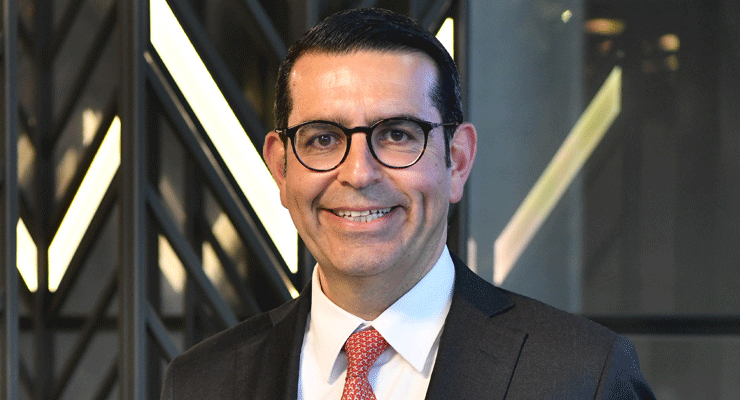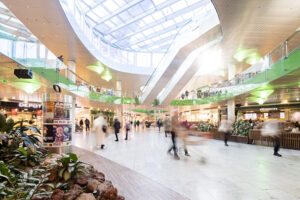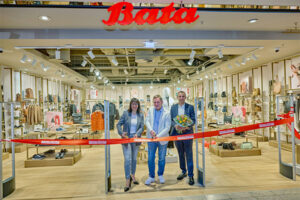ACROSS: FIBA COMMERCIAL PROPERTIES HAS RETAIL PROPERTIES IN TÜRKIYE, EASTERN EUROPE, AND CHINA. WHAT DO YOU CONSIDER TO BE THE MOST IMPORTANT CURRENT TRENDS IN THE INTERNATIONAL RETAIL REAL ESTATE INDUSTRY?
YURDAER KAHRAMAN: The most obvious change is the shift towards mixed-use real estate, which allows for the realization of immense synergies, but even those properties are constantly changing. A few years ago, mixed-use focused on combining asset classes. Now, the focus is on making these as flexible as possible. This is particularly evident in the office sector, where there are often no longer standard five-year contracts, but flexible agreements that sometimes only last for a few months. In addition, the hotel asset class is taking on a new significance, especially in combination with retail. Every location is individual, and therefore, ideally, every property and its environment are continuously analyzed to develop offers tailored to the community.
ACROSS: WHAT IS ANOTHER BUZZWORD?
KAHRAMAN: Refurbishment. This trend goes hand in hand with the individualization of locations. In Bucharest, Romania, we converted a fifth of the Plaza Romania shopping center into offices to strengthen the location. In this case, transforming retail space was the key to success.
Another example is the restructuring of a department store in China. The original store had 25,000 square meters spread across three levels, but we converted it into an area with different functions. On the ground floor, we created a retail area with a new entrance. This resulted in smaller retail units that looked like a new mall. The guiding theme for the second level is entertainment, complete with a fun park and various edutainment concepts that are very popular in China. On the third level, we have created a rentable conference area that can also be used for other events, such as weddings, 365 days a year. After intensively analyzing the location’s needs, we have created three different functions from a single department store. For us as owners, the result is an incredible increase in value.
ACROSS: IN YOUR OPINION, WHAT IS THE MOST ESSENTIAL REQUIREMENT FOR A COMPANY TO CARRY OUT LARGE-SCALE RESTRUCTURING?
KAHRAMAN: The basis for the project’s success, for example, in China – and many other ongoing restructuring projects – is that we have expertise in all asset classes. A big problem in Western Europe is that many companies have focused on only one use form.
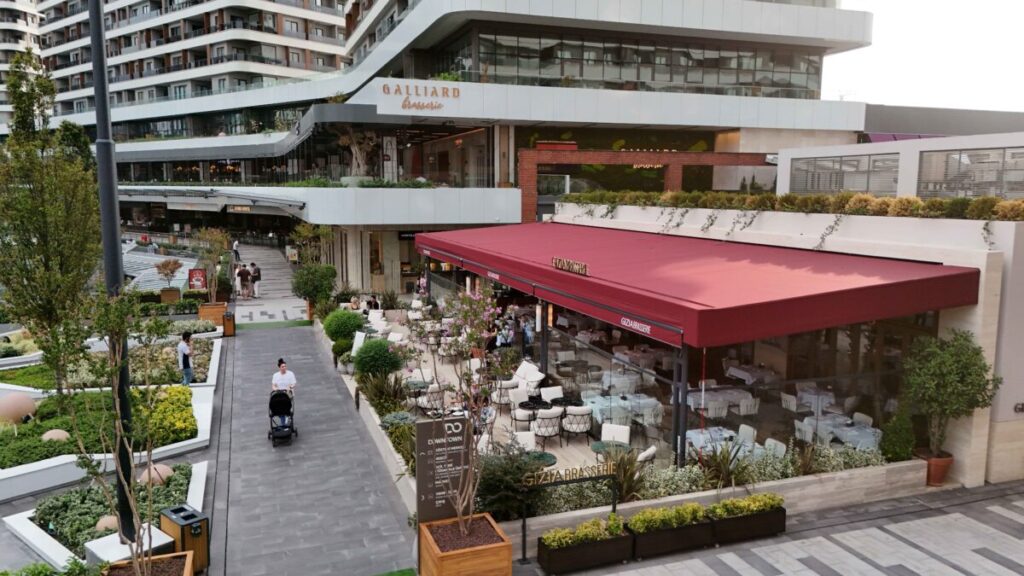
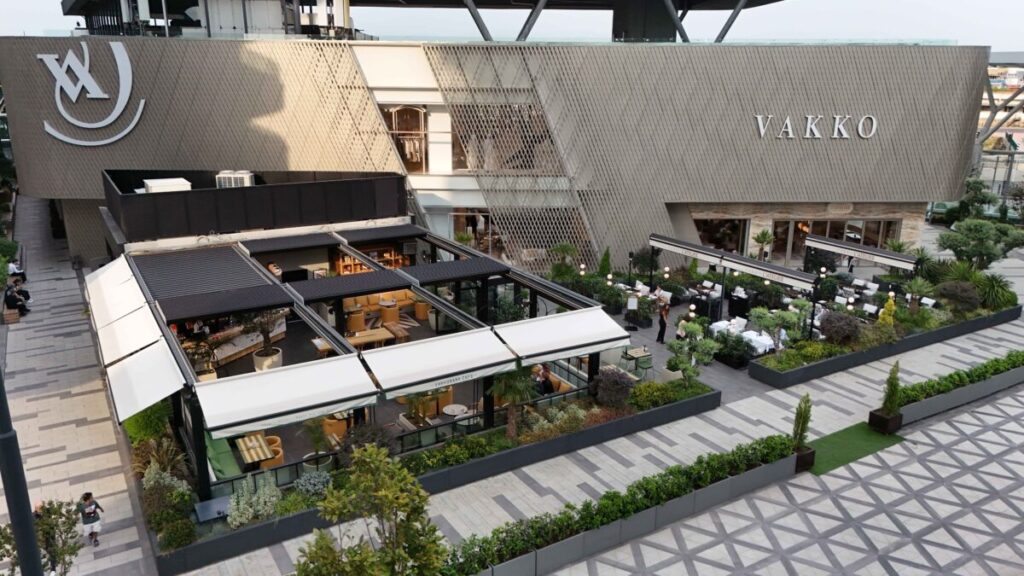
Well-thought-out gastronomy concepts in shopping centers that fit the catchment area are more important than ever. Here is an example from Downtown Bursa in Türkiye.
ACROSS: YOU HAVE A CRITICAL VIEW OF THE EUROPEAN SHOPPING CENTER INDUSTRY.
KAHRAMAN: Many shopping centers no longer have a clear strategy. They no longer have a unique selling point. Most of the concepts are outdated, and the centers are interchangeable. On the other hand, there are some exciting national and international concepts. There is, for example, a lack of attractive gastronomic offerings or entertainment, which highlights the insufficiencyof a property.
Many properties need renovation and optimization and are, therefore, unattractive to customers. A number of properties are lacking attractive tenant structures, and the majority of tenants show deficits in the areas of shop fitting, product presentation, clarity, customer orientation, and, last but not least, digitization, among others.
ACROSS: WHERE DO YOU SEE THE BIGGEST BOTTLENECKS IN THE INDUSTRY?
KAHRAMAN: The situation in numerous European city centers is dramatic. For a very long period, there has been a visible downgrading. That applies to shopping streets as well as to inner-city centers. A strong trend towards discount concepts, even in locations with high-income catchment areas, was and is significant. This tenant mix deters many customers. Of course, it’s understandable to want to fill vacancies quickly. Still, these often-rushed decisions that favor more discounters have led to a decline in the quality of many locations.
ACROSS: IS THIS REVERSIBLE?
KAHRAMAN: Of course, everything can be corrected to a certain extent, but it is unclear what was lost along the way. Lease contracts play a significant role here, and they tend to be longer for discount contracts. At the same time, the owner’s earnings are pretty low, which contrasts with the industry’s otherwise rising costs. There is simply a lack of sustainability, meaning no further investments will be made at the location. It is obvious that, on the one hand, the streets are full in European city centers, while, at the same time, the shopping centers and retail in general are not working. The industry then throws topics such as e-commerce into the mix as an excuse. This can no longer be used as an excuse, because we have all seen that e-commerce needs brick-and-mortar support.
Please don’t get me wrong, China is by no means a role model for everything, but it is a good example here. E-commerce is more vital there than anywhere else, but the shopping centers are also fully let. Despite the growth of online retail, the centers are architecturally attractive and have an appealing mix of tenants. Shoppers stay for a long time precisely because the entertainment and gastronomy offerings are high in number and quality.

ACROSS: HAVE THERE ALSO BEEN MANAGEMENT MISTAKES IN EUROPE?
KAHRAMAN: Of course, the management of an entirely let center, for example, in Asia has obviously done its homework. Anyone who continues to pursue a “one size fits all” standard at predestined locations in Western Europe, who does not promote omnichannel concepts with their tenants, or who still sees the topic of digitalization as a particular topic is making serious management mistakes. However, it is not only management that is responsible. Supervisory boards, owners, and management must all pull together and share the same attitude and vision.
Companies that have many retail properties but are still not firmly positioned in the areas of digitalization or artificial intelligence (AI) must ask themselves how they want to continue to exist. Similarly, companies with high vacancy rates should ask themselves whether it is worthwhile to fill those spaces somehow or whether a restructuring plan with a new type of use would be more appropriate. That’s precisely where joint approaches across management and the asset class are needed.
ACROSS: WHAT ARE SOME OF THE BUZZWORDS THAT DESCRIBE A CONTEMPORARY MANAGEMENT STYLE?
KAHRAMAN: Internationality, global experience, recognizing and implementing global trends, entertainment, education, digitalization, AI, as well as speed and flexibility. For many of the first points mentioned, companies have optimal conditions because they are often active in various countries. They could easily make a change. However, this means that companies would not only manage from the headquarters but also consciously bring employees and their ideas from abroad to the home market. This exchange is often insufficient and inefficient enough in Europe at the moment. Tangible interfaces for internationality would have to be created in companies – if only because global trends could be adapted faster. Retail trends change so quickly today. You don’t want to ruin your future by making the wrong leasing decisions.
ACROSS: IN WESTERN EUROPE AND ESPECIALLY IN GERMANY, WE ARE EXPERIENCING A POOR RETAIL MOOD. IN FIBA CP’S HOME MARKET OF TÜRKIYE, THE ECONOMIC CONDITIONS ARE MUCH WORSE, BUT PEOPLE ARE MORE ENTHUSIASTIC ABOUT SHOPPING. WHY IS THAT?
KAHRAMAN: Germany, in particular, has traditionally had a high savings rate. In countries with more inflation experience, such as Türkiye, people traditionally consume much more because they know the prices will increase soon. But, it’s not just due to economic and demographic reasons; it’s also about the attractiveness of products and real estate. If we look at which retailers in Germany have recently gone bankrupt, we quickly see that many of the problems were homemade. Those companies, especially in the clothing sector, were overtaken by more agile concepts that had adapted to the relevant international trends early on.
Demographic factors also play a role. Germany has an aging population, which tends to be more cautious with spending and savings. In contrast, Türkiye has a younger population that is often more inclined towards consumption and trends, which facilitate rapid changes in spending habits and that can drive higher retail enthusiasm. Additionally, Türkiye’s dynamic and rapidly growing population creates a different kind of demand for products and shopping experiences compared to Germany’s more stable demographic profile. These retailers struggled to innovate and meet changing consumer preferences, which compounded their financial difficulties.
Digitization by Fiba CP: Fiba Commercial Properties and Octopus have teamed up to transform Adana’s M1 Mall digitally, introducing cuttingedge technologies that interact with screens designed to elevate the customer experience and drive significant value for both retailers and the mall itself. By integrating a comprehensive retail tech ecosystem, the project will use digital signage, video analytics, data-driven ad systems OctoAds, and the innovative “Lift and Learn” technology, creating an environment in which customer interactions with products are seamlessly tracked and analyzed in-store. This approach enhances instore engagement and gives retailers valuable insights, enabling more effective marketing strategies that are tailored to specific demographics observed within a mall’s or store’s premises.
ACROSS: WHAT IS A CURRENT INDUSTRY TREND THAT WE MUST NOT IGNORE?
KAHRAMAN: Edutainment. In Asia and the Arab world, entertainment is moving firmly into the education sector. Families spend much time at the centers because their children have painting, music, or sport lessons there. The shopping centers thus increase their dwell time and use the synergies. This is often accompanied by the expansion of the F&B to offer excellent dining. Digitalization and AI also help to guide people and offer consumers suitable offers. Another area is services. In addition to doctors and medical supplies, there is a need for care and physiotherapy services, for example, if the demographic environment makes this necessary or seems sensible.
ACROSS: THAT MEANS THE BAD CONSUMER MOOD IS FUNDAMENTALLY ROOTED IN A POOR OFFERING.
KAHRAMAN: Unfortunately, I have often observed that shopping centers do not pay enough attention to their environments. A shopping center must analyze its environment carefully and decide what added value it can create. If, for example, many luxury labels are located around a shopping center, then it needs a range of matching products. Consumers might buy their luxury handbags on the high street, so the center needs a fashion offering that goes with them. This might not be luxury, but it will be premium or affordable luxury. It also needs suitable and complementary cosmetics stores and a food and beverage offering that specifically serves these customers. The environment analysis is too often neglected.
ACROSS: WHY DOES THIS KIND OF WRONG POSITIONING HAPPEN?
KAHRAMAN: In Western Europe, I often see no consistent lead management. There are too many decision-making and management levels. Many companies are too complicated. The board of directors, supervisory board, or owners are not presented with specific solutions, but rather with arguments that explain why something is not possible or why the risk for new solutions is too great. This is a fundamental problem. The organization is sluggish, and the innovative players in the company have become tired because they cannot get their positive approaches across. Other players have simply – and I am aware of the harshness of this statement – become blinkered. In Western Europe, with Germany as the largest market, there is a whole series of points of criticism. I am not ignoring the positive examples, which undoubtedly exist. In general, however, I see a management problem that, at its core, consists of a lack of openness and willingness to innovate.
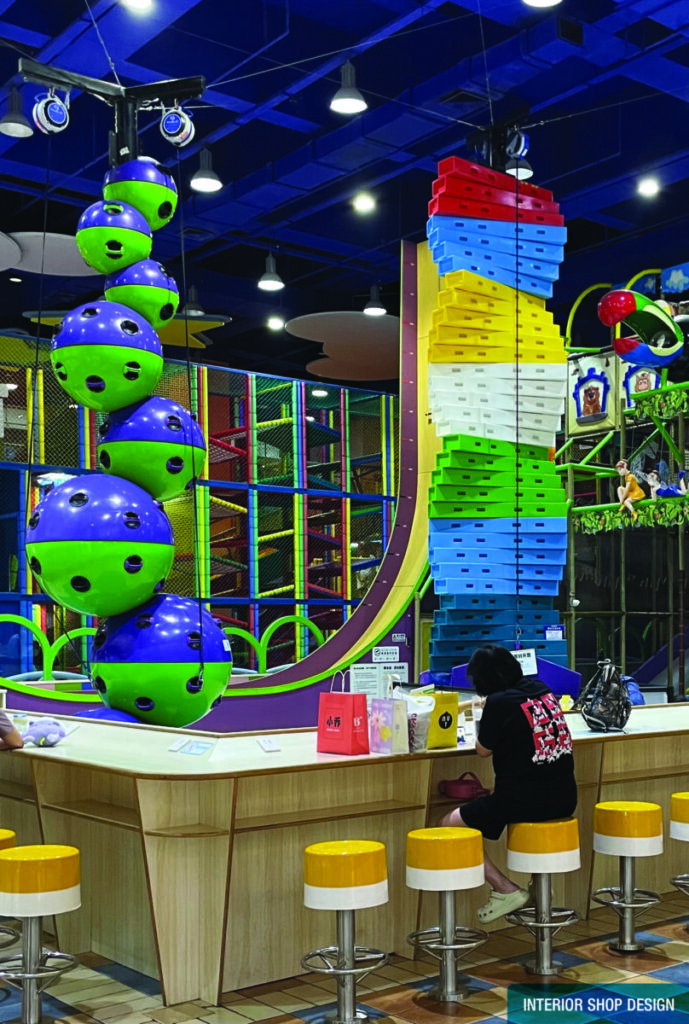
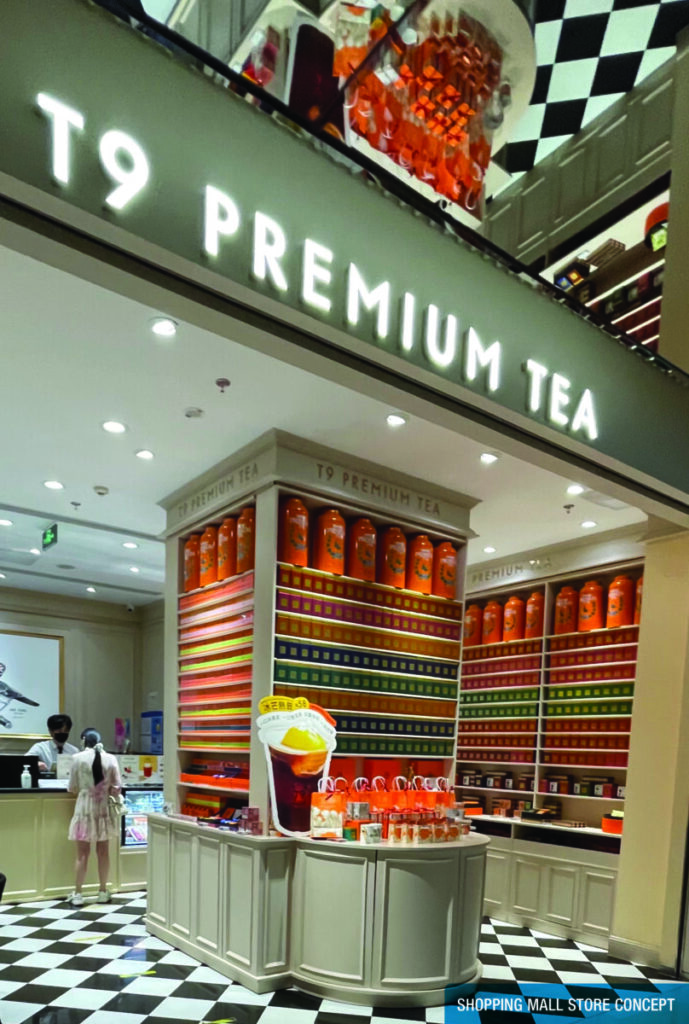
Innovative Interior Design and Store Concepts from China.
ACROSS: TODAY, INNOVATION IS OFTEN ASSOCIATED WITH TECHNOLOGY. HOW DO DIFFERENT REGIONS APPROACH THE RELATIONSHIP BETWEEN TECHNOLOGY AND INNOVATION, AND WHAT ARE THE KEY REGIONAL DIFFERENCES IN THIS APPROACH?
KAHRAMAN: “I would like to lead the customers more towards their needs” – one of the critical statements made when you exchange ideas with a new technology provider. In Germany, “data protection” is the first thing you hear. This phrase is like a knock-out argument, but it should be the other way around. It should start with a fascination for a new technology. The follow-up questions should be: What can I do and how? What possibilities are there? What leeway do I have in terms of legislation? Data protection is an important topic, but there is leeway, and data protection doesn’t prohibit everything. In Türkiye, there is a much stricter data protection law with many regulations that don’t exist in Germany. The country is highly sensitive, yet the use of technology in the retail and shopping center sector is much greater.
ACROSS: SO, IT’S ABOUT OPENNESS AGAIN.
KAHRAMAN: The fundamental question is: Do we want to play the digitalization game or not? Yes, data protection is an important issue, but there are ways and solutions. This topic starts much earlier. Take the topic of wayfinding management and signage. If you go to some Western European malls, you are still confronted with an unaesthetic forest of completely static signs. There are so many more attractive solutions. The same applies to signage solutions in retail spaces.
ACROSS: HOW SO?
KAHRAMAN: There is a specific example that is no longer an exception in Türkiye: A customer enters a store and picks up a product, such as a shoe, and looks at it for 15 to 20 seconds. The system registers this and displays alternatives to that specific product on a nearby screen: other colors, available sizes, or matching products. That is a real added value for the customer. As a retailer and landlord, I must be open to such approaches. For example, if the landlord is negotiating with a new cosmetics concept and the concept says, “We want to implement the following AI tools and use them to create an entirely new customer experience, spending 400,000 euros instead of the average 200,000 euros.” As a landlord, I must pay attention and, if necessary, accommodate them.
ACROSS: IN A NUTSHELL: WHAT ARE THE SOLUTIONS FOR THE MANAGEMENT PROBLEMS THAT HAVE BEEN IDENTIFIED?
KAHRAMAN: Sustainable investments, the right projects and products, the rapid optimization of existing properties or their conversion, and the courage to demolish them if necessary. Topics that should be at the top of the management agenda are digitalization, AI, and omnichannel. The top management principle must be to recognize market situations quickly – to constantly analyze the environment, thereby ultimately increasing footfall and dwell time.
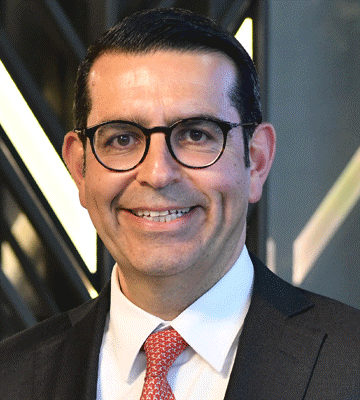
Yurdaer Kahraman
Yurdaer Kahraman, CEO and Board Member of FİBA Commercial Properties.
